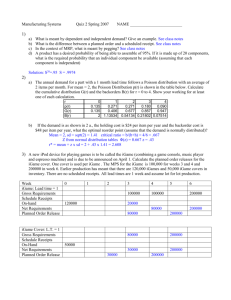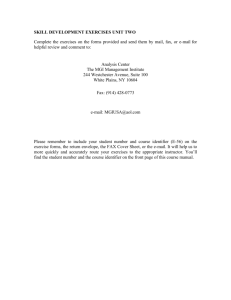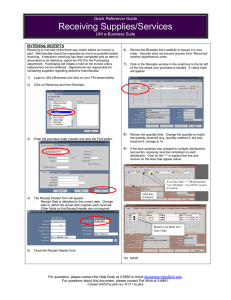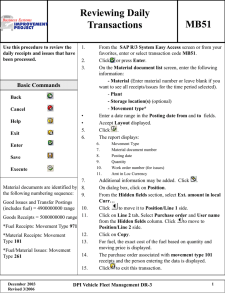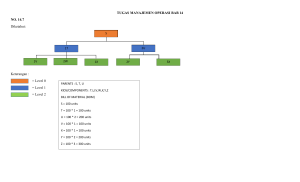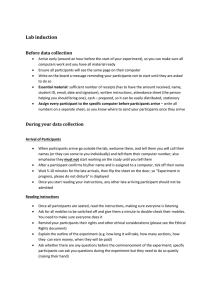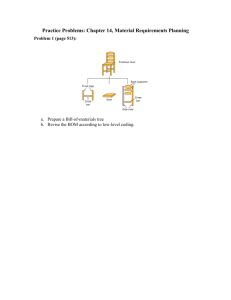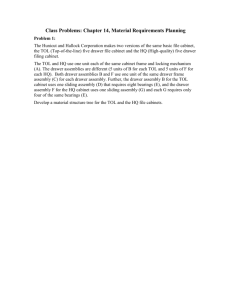Chapter 9_p7
advertisement
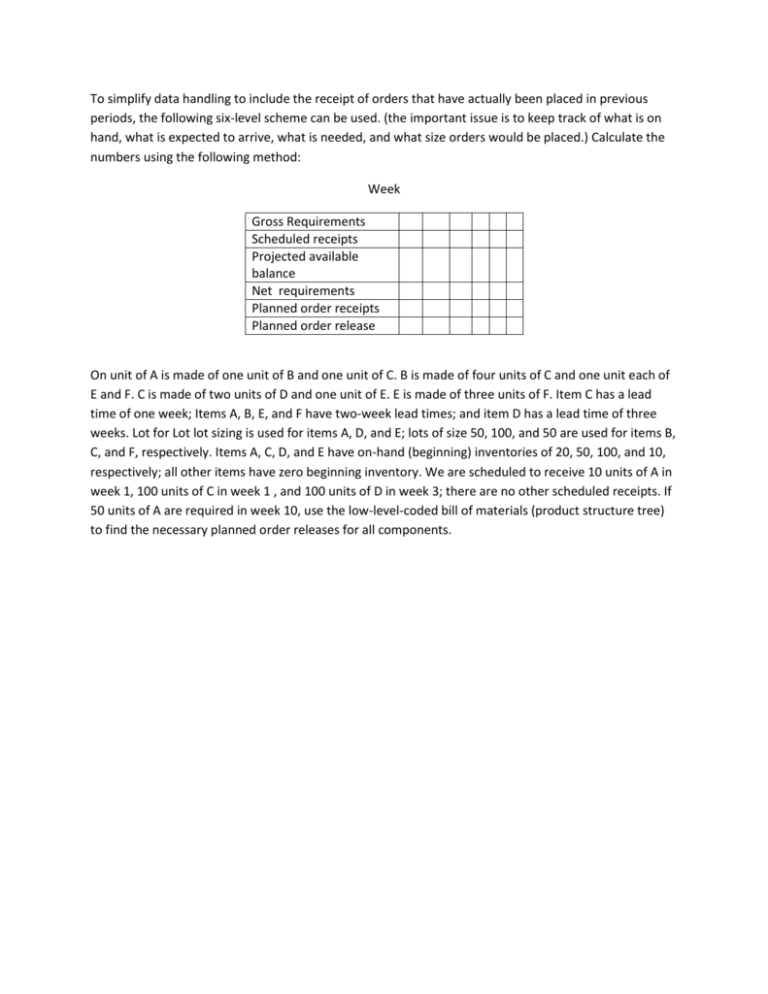
To simplify data handling to include the receipt of orders that have actually been placed in previous periods, the following six-level scheme can be used. (the important issue is to keep track of what is on hand, what is expected to arrive, what is needed, and what size orders would be placed.) Calculate the numbers using the following method: Week Gross Requirements Scheduled receipts Projected available balance Net requirements Planned order receipts Planned order release On unit of A is made of one unit of B and one unit of C. B is made of four units of C and one unit each of E and F. C is made of two units of D and one unit of E. E is made of three units of F. Item C has a lead time of one week; Items A, B, E, and F have two-week lead times; and item D has a lead time of three weeks. Lot for Lot lot sizing is used for items A, D, and E; lots of size 50, 100, and 50 are used for items B, C, and F, respectively. Items A, C, D, and E have on-hand (beginning) inventories of 20, 50, 100, and 10, respectively; all other items have zero beginning inventory. We are scheduled to receive 10 units of A in week 1, 100 units of C in week 1 , and 100 units of D in week 3; there are no other scheduled receipts. If 50 units of A are required in week 10, use the low-level-coded bill of materials (product structure tree) to find the necessary planned order releases for all components.
